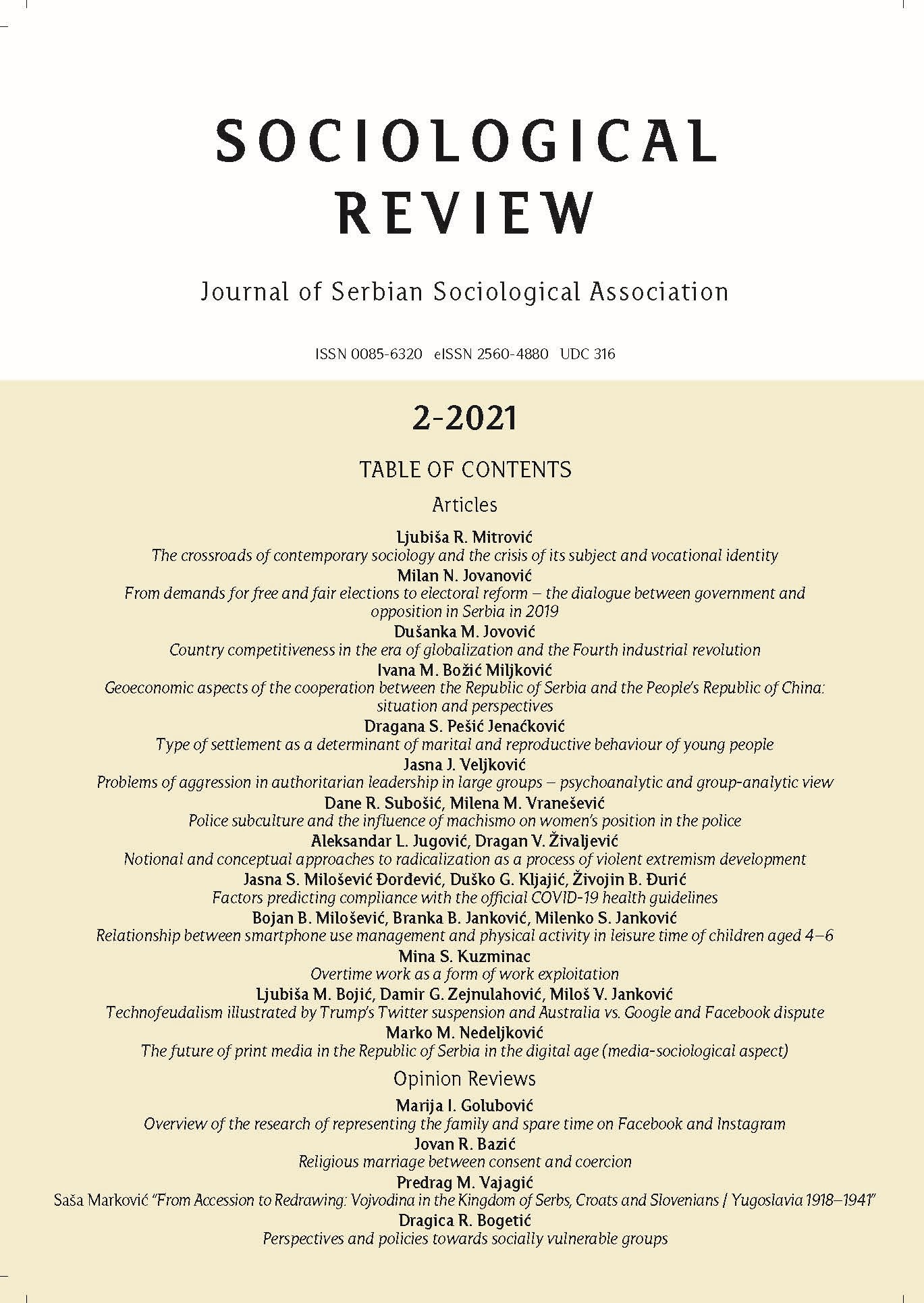Relationship between smartphone use management and physical activity in leisure time of children aged 4–6
Relationship between smartphone use management and physical activity in leisure time of children aged 4–6
Author(s): Bojan B. Milošević, Branka B. Janković, Milenko S. JankovićSubject(s): Social Sciences, Sociology, Applied Sociology, Social development, Health and medicine and law, Family and social welfare
Published by: Српско социолошко друштво
Keywords: smartphones;preschool children;children’s physical activity;leisure time;parental management of smartphone use;
Summary/Abstract: We are witnesses to an ever faster and more “aggressive” influence of modern technologies, not only on lives of adults and adolescents, but also children of preschool age. This planetary trend has not bypassed contemporary Serbian society either. The subject of this paper is the analysis of the data collected through the original empirical research in relation to establishing a connection between (1) the dimension of smartphone control imposed by the parents and (2) the dimensions of physical activity of childrenof preschool age in their leisure time. The paper analyzes the physical activities of preschool children depending on the following variables: children’s gender and age (4, 5 or 6 years old), whether the child owns a smartphone or not, whether the child is included in a programmed sports activity; all this in relation to the parents’ statement on whether they limit the time of the child’s smartphone use. The relationship between these variables is justified by applying the Parental Smartphone Use Management Scale (PSUMS), while Baecke questionnaire is used for the data on preschool children’s physical activity in their leisure time. The empirical research was carried out in the first half of 2020 by conducting a survey among the parents of 943 preschool children aged from 4 to 6 attending preschool and daycare centres in the territory of the Autonomous Province of Vojvodina (Serbia). Based on the analysis of the collected data, we have deduced the following: 1. a large percentage of children from 4 to 6 do not own their own smartphones (77.9%), but nonetheless they use smartphones on a daily basis (73.4%); 2. there are no differences in children’s physical activities in relation to their gender and age; 3. children spend more time on physical activities in their leisure time if they do not have their own smartphones, if they are engaged in an organized sports activity (“recreational schools”), as well as if their parents limit their smartphone use, and 4. children participate more in physical activities in their leisure time if their parents are consistent regarding children’s smartphone time management. Recommendations to parents based on our research are that children should be included in free physical activities at the earliest preschool age, and in the structured/programmed ones at a later preschool age, because that is the period most suitable for accepting adequate habits of physical exercise that are carried on into adulthood. In that manner, children will more easily “give up” their passive (sedentary) activities in leisure time, which is usually spent alongside use of smartphone, all with the aim of optimizing the quality of their growing up.
Journal: Социолошки преглед
- Issue Year: 55/2021
- Issue No: 2
- Page Range: 477-508
- Page Count: 32
- Language: English, Serbian

